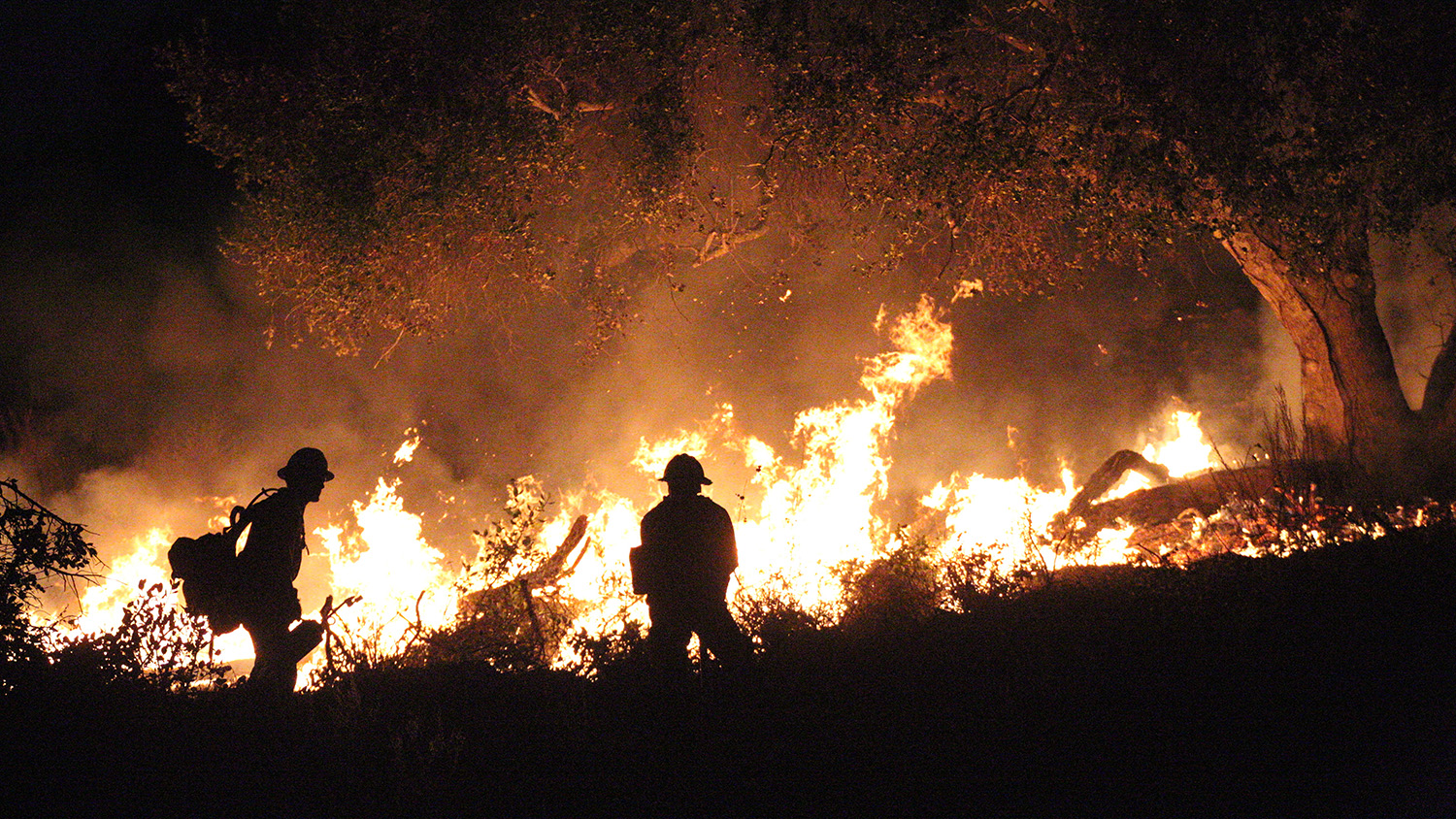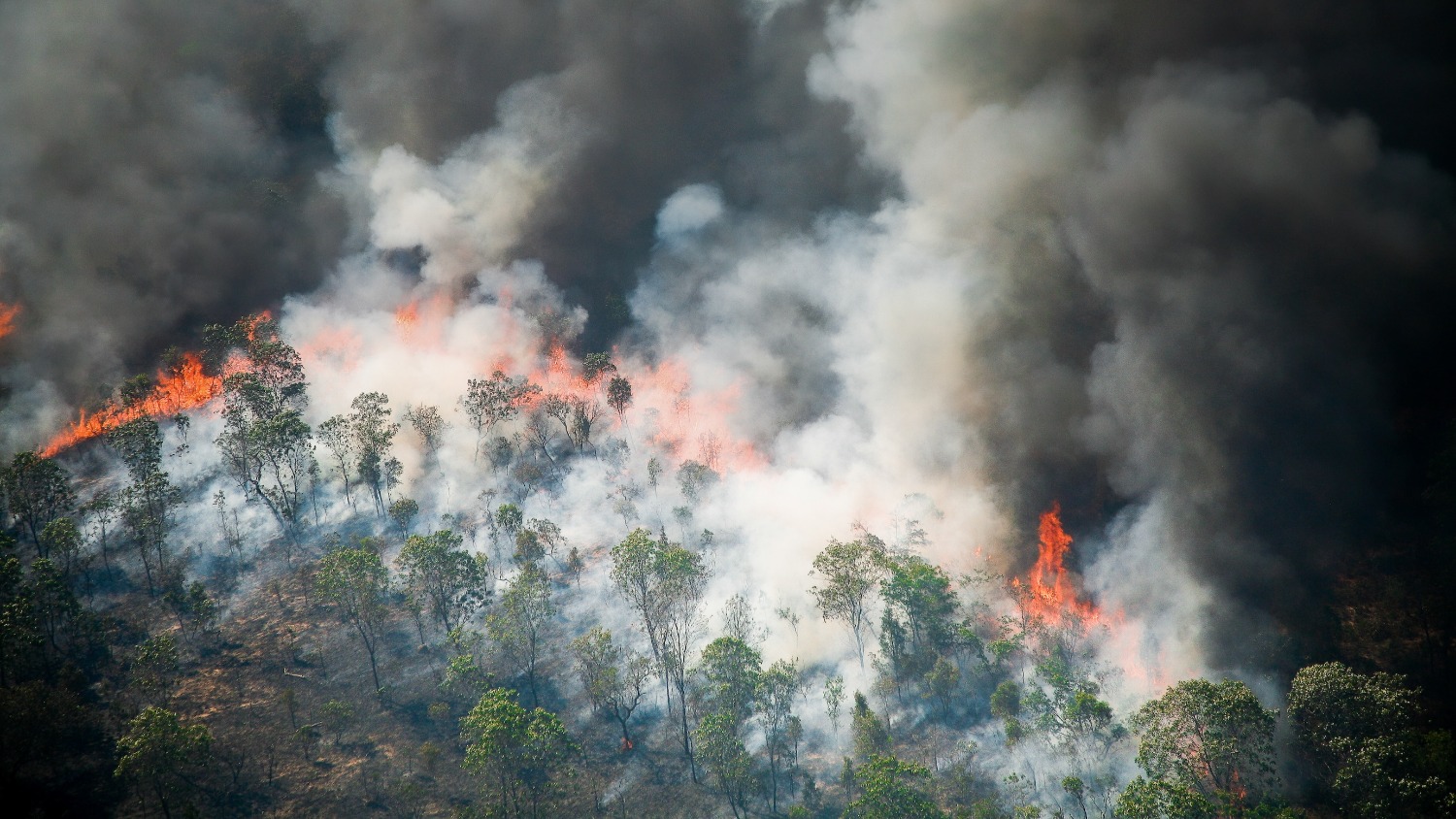Strong Winds Can Make It More Difficult, Dangerous to Extinguish Wildfires

Over the course of just a week in early January, multiple wildfires erupted and quickly spread into the Los Angeles area. The wildfires engulfed more than 40,000 acres, burning thousands of structures and killing more than two dozen people.
While the cause of the wildfires remains unknown, experts have determined one of the primary factors that led to their rapid spread: the Santa Ana winds. The winds bring gusts of dry, warm air from the inland desert to the coast of Southern California.
“Winds definitely contribute to the spread of wildfire,” said Joseph Roise, a professor of forestry and environmental resources at the NC State College of Natural Resources.
Roise, who studies wildland fire behavior and prevention, said winds supply wildfires with additional oxygen. When burning fuel is exposed to oxygen from the air, a chemical reaction occurs that releases heat and generates combustion.
As winds become stronger, they can move flames and carry embers into areas with unburned fuel, essentially “pushing” the fire into vegetation and structures, allowing it to rapidly expand and ignite fresh spots further ahead of the main fire front.
“More fuel and more oxygen makes fire burn hotter,” Roise said. “A hotter fire burns quicker because higher temperatures accelerate the combustion reaction, allowing fuels to burn more rapidly and efficiently.”
Winds of any speed can affect fire behavior, according to Roise. Sustained winds push wildfires at a predictable rate and can cause significant damage, but gusts are often considered more dangerous because they cause wildfires to move at an unpredictable rate and direction.
Roise said wind gusts with speeds of 10-15 mph are usually manageable, but gusts of 20 mph or more are too dangerous for firefighters to try to combat directly. Firefighters struggled to contain the Los Angeles wildfires when the winds were strongest, with gusts sometimes reaching speeds of up to 99 mph or more in some cases.
Firefighters can use a computer program called “BEHAVE” to determine the effect of sustained winds and other factors on wildfire behavior, but “gusts can make a fire very difficult to predict and control,” Roise said.
When combatting a wildfire, firefighters try to estimate the speed of the flaming front, or the part of the fire that is actively burning and moving. If the front is moving faster than a firefighter can run, the firefighter might have no option but to use their fire shelter.
A fire shelter is a lightweight, portable device used by wildland firefighters to protect themselves from extreme heat during a wildfire. The shelter reflects radiant heat and traps breathable air, essentially creating a small safe space until the immediate danger passes. It is a last resort only to be used when escape routes are inadequate.
Strong winds can make it difficult for firefighters to deploy their fire shelter, according to Roise. More specifically, it can make it challenging for them to properly position and secure the shelter. Gusts can even lift the edges of the shelter, exposing firefighters to hot air and flames.
“If they’re on the flank of a wildfire, the firefighter might be able to back away from the fire. But if the wind speed and direction changes, the firefighter might get trapped, forcing them to change tactics or look for an escape route or even use the fire shelter,” Roise said.
In an urban setting like Los Angeles, the streets act like a fireline. A fireline is a place without fuels that a normal fire cannot cross. Strong winds can carry embers across streets, allowing it to jump the fireline. Once a fire jumps a fireline, it can quickly spread to new areas, potentially trapping firefighters or forcing them to retreat rapidly.
Roise is among a group of researchers who recently developed four new fire shelter designs that provide enhanced protection by incorporating an inner heat-blocking barrier and additional thermal insulation. The prototypes could provide manufacturers with a new standard for design and testing.
Another challenge that firefighters face when combating wildfires is the effect of strong winds on the surrounding landscape, according to Roise. Strong winds can blow down trees or rip large branches from trees. These hazards can cause impact injuries, head injuries and even death.
Ultimately, firefighters in urban areas like Los Angeles must find new ways to achieve containment, according to Roise. Wildland firefighters use fire to fight fire by moving away from a fire, building a fireline and then purposely burning the fuels between the fireline and the fire. Structural firefighters cannot deploy this tactic.
“Imagine the uproar if the structural firefighters moved back from the fire a couple of blocks and then burned up the houses between the fire and the new position. That is simply not an option, especially when the winds are blowing so fast. We definitely need new tactics and strategies with wildfires in an urban setting,” Roise said.


